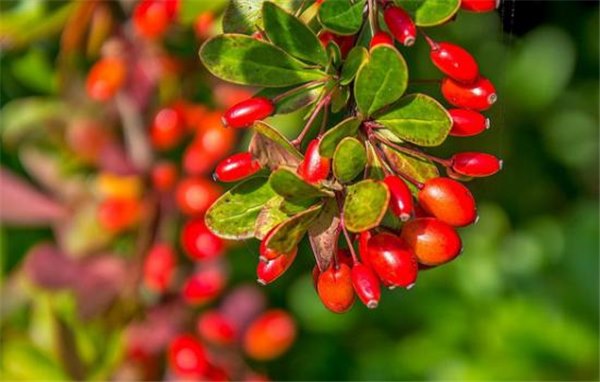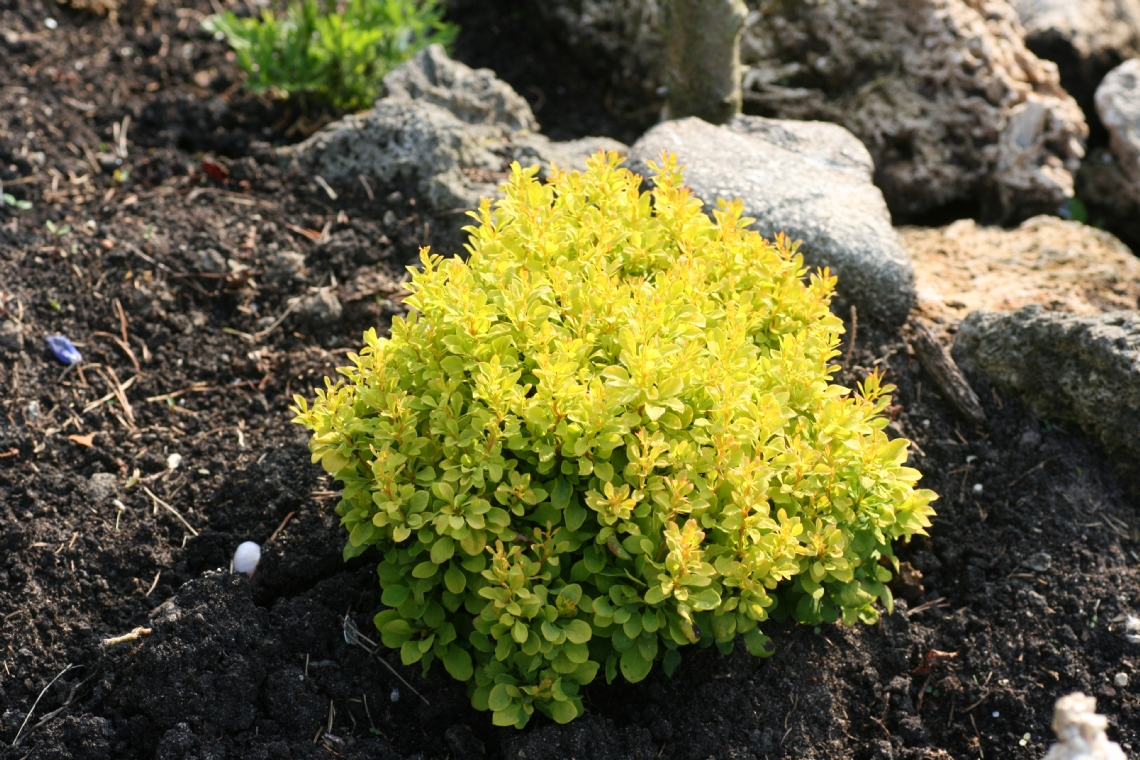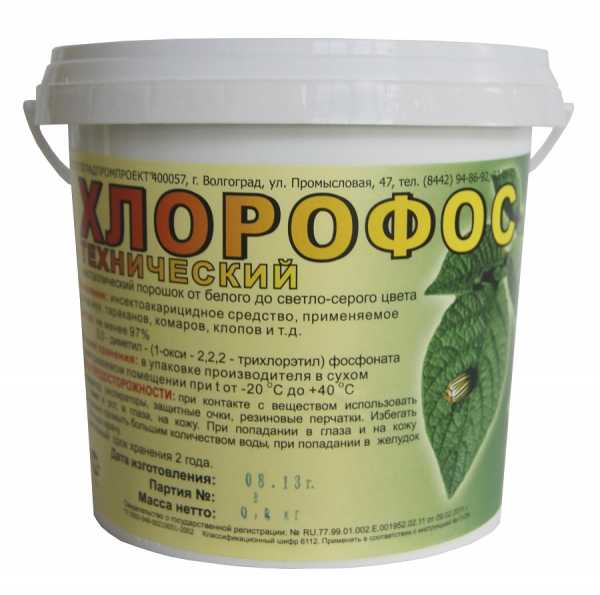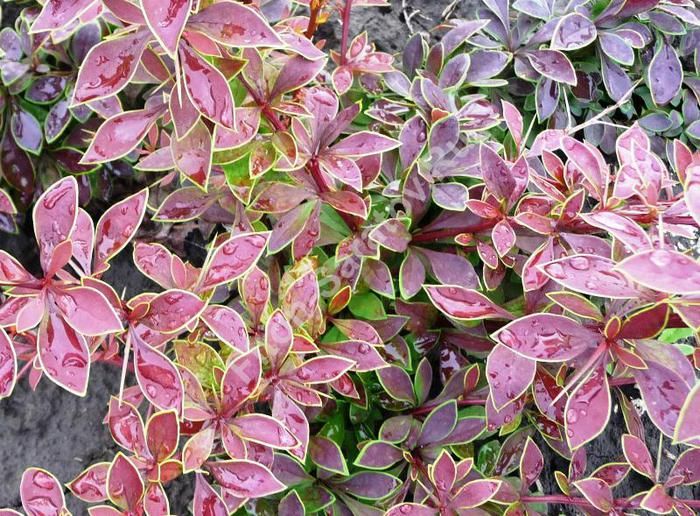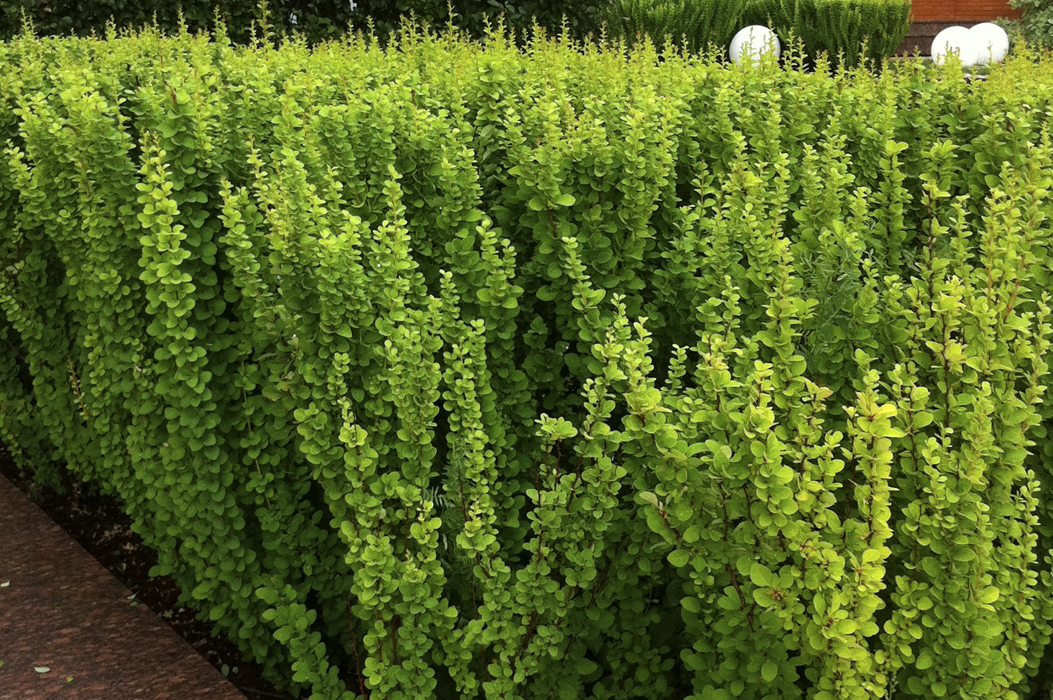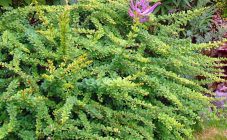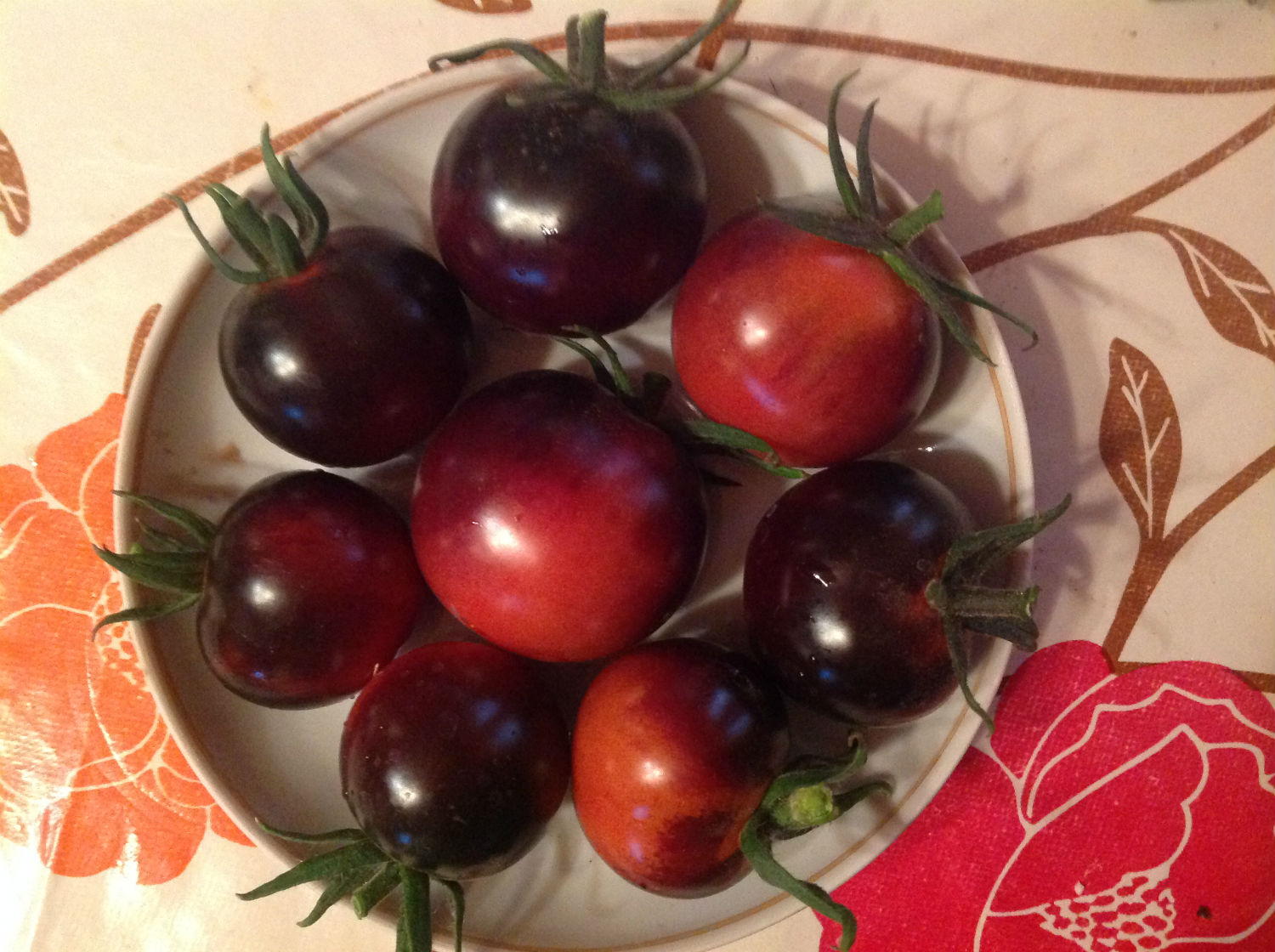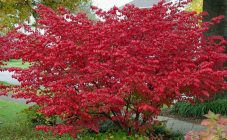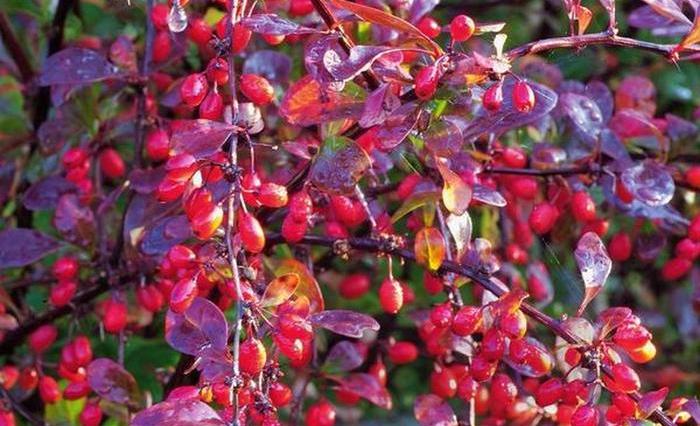Content:
The picturesque Thunberg barberry Rose Glow will be the highlight of any site. This shrub attracts with unusual foliage color. Old shoots give leaves of a purple tone, annual growth forms variegated leaves with white stripes. The foliage of these varieties cannot turn green.
Characteristics and features of the variety
Unusual barberry Rose Glow belongs to the Barberry family. It is a deciduous shrub whose natural habitat is the Far East. The perennial is cultivated throughout the country everywhere.
Brief description of the culture: evergreen deciduous shrub, the maximum height of the bush is 1.5-2 m. Abundant flowering, yellow tones, in the spring month of May. It stands out against the general background with purple foliage with gray or whitish spots. Prefers acidic to moderate alkaline soil compositions. Every year, the evergreen shrub gives an increase of 15 cm. It reaches its maximum height after 10 years of active vegetation. These are the main technical characteristics that every gardener needs to know.
In September, fruits begin to ripen, with an intense red tone, which remain as a decoration for the bush after the leaves fall for the entire winter. The variety is resistant to harmful pests and dangerous diseases.
Frost resistance
Withstands low temperatures well, periodic heat and drought. It is often cultivated to create hedges, trellises, and original color compositions. In some cases, the tops of an evergreen perennial may freeze slightly. Spring formative pruning will help to quickly restore the shrub.
Features of growing varieties
Before planting barberry, you need to decide on the site. For this, you need to choose areas with open space or partial shade, with protection from the wind. High-quality humus, sod land, sifted river sand are added to the soil mixture. The optimum acidity is pH 7.5. When planting in a composition with a high level of acidity, liming is required, 300-400 g of slaked lime are introduced under the bush.
Perennials with decorative foliage color change color during planting in the shade. During planting, make sure that the root collar is at ground level.
Care
In leaving, barberry Rose Glow is unassuming. It is advisable to protect the perennial from blowing winds, drafts. The soil is loosened, fertilized so that it is moisture-permeable. Perennial practically does not need high-quality watering. The exception is the period of prolonged drought. Occasionally, the soil around the trunk circle is loosened, weeded from weeds. For the winter period, the trunk circle is mulched, poured thoroughly with a compost layer, sawdust and bark.
Once a year, during the period of spring renewal, high-quality organic matter is introduced. Bushes with a loose crown need annual pruning in spring. To protect a young seedling from freezing, it is covered with spruce branches, peat or dry foliage. This is done in the first three years of the development of a slender barberry.
Reproduction
Rose glow barberry is propagated by traditional methods: bush division, layering, green cuttings, seeds.
With the seed method of reproduction, ripe fruits are selected, carefully separate the seeds from the pulp.Next, the selected samples are disinfected in a weak solution of manganese and thoroughly dried. Finished seeds are placed in the groove, deepening by 1 cm. In spring, the seedlings are thinned, leaving 3 cm between the seedlings. Two-year-old young growth is planted in a permanent place. If sowing is carried out in spring, then the selected seeds must be stratified for a long period, hardening at a temperature of 2 to 5 degrees.
Also, gardeners take away young branches placed on the lower tier. The sprout is pressed close to the ground, sprinkled with soil. The rooted cuttings are transplanted to a separate place after a year. Then you can already change the location of the perennial.
Pest control
The shrinking and drying out of Lithuania occurs due to the attack of the barberry aphid. To protect the barberry from this pest, in the spring they spray it with a solution of natural laundry soap.
The destructive flower moth attacks the fruits, the lush barberry from it is treated with high-quality chlorophos.
Mushrooms form leaf spot, while the decorative properties of the spreading barberry are reduced. To maintain a slender barberry during this period, spraying with copper oxychloride is used before the onset of lush flowering and at the end of it.
Advantages and disadvantages of the variety
Gardeners choose persistent barberry Thunberg rose glow, due to the following advantages of the variety:
- Undemanding in care, soil composition;
- Withstands dry periods perfectly;
- Does not tolerate locking;
- It is resistant to common plant diseases: harmful mildew and rust;
- The decorativeness of the variety makes it even more attractive for the formation of landscape design;
- Barberry is a frost-resistant perennial that can withstand temperature changes.
Among the shortcomings, it is worth noting the prickly appearance, which causes difficulties in the implementation of care procedures: weeding the trunk circle, loosening the soil, collecting fruits.
Unpretentious barberries create a certain scope for the gardener's imagination. Perennial is very convenient for the formation of green spaces, the cultivation of decorative hedges in areas. In addition, the unpretentious barberry tolerates a shaping haircut, which makes the species even more attractive for cultivation everywhere.
